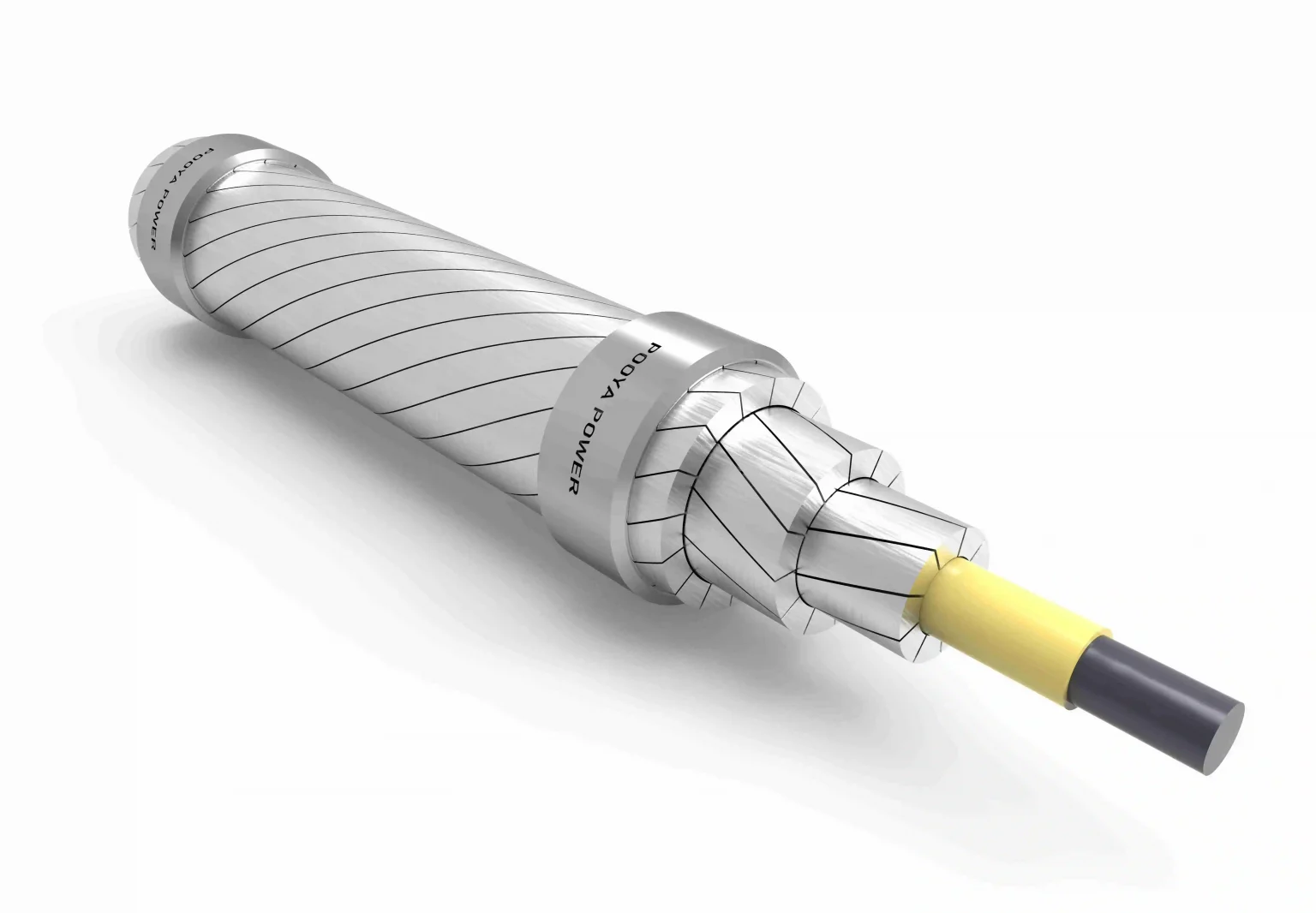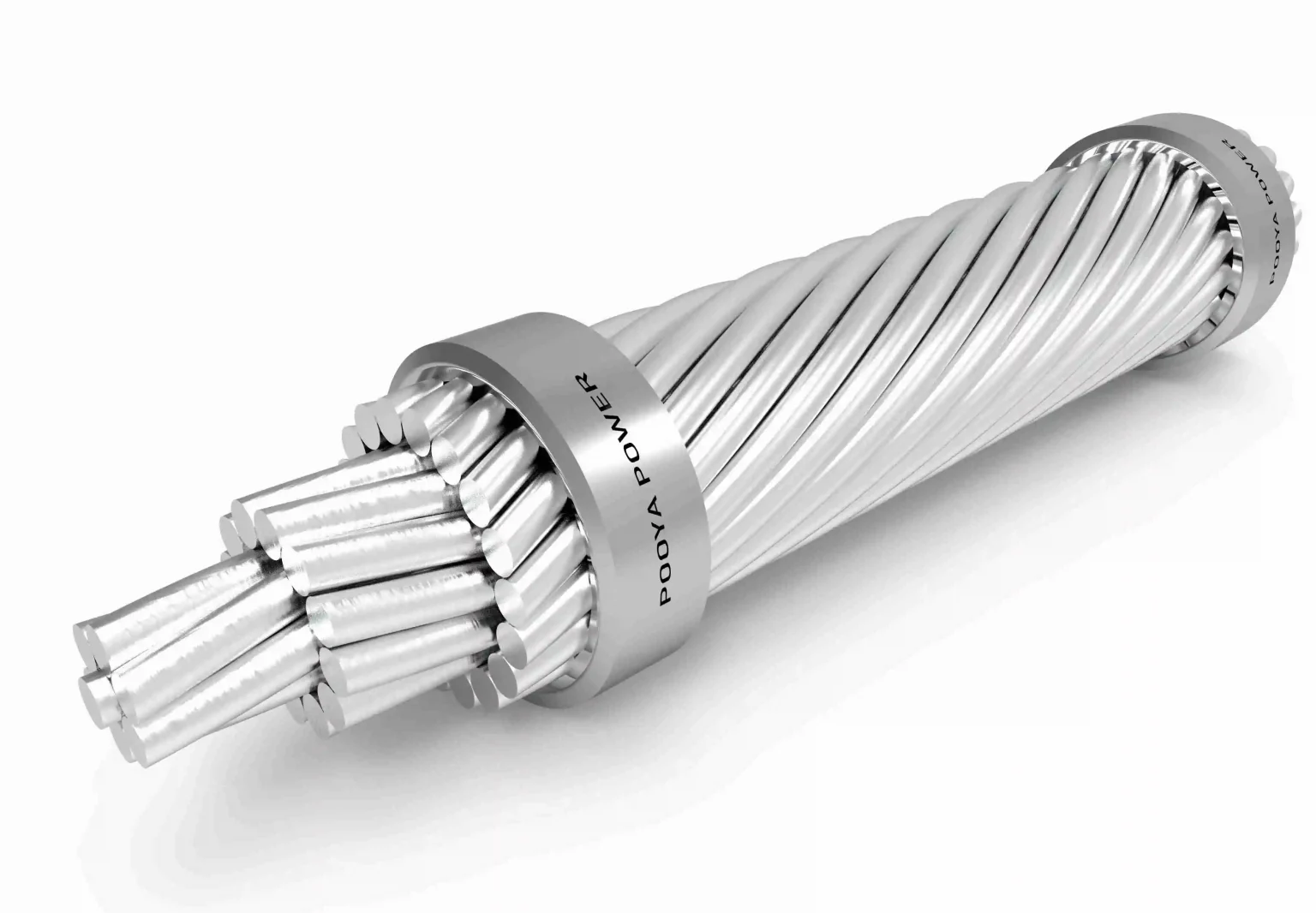There are 7 types of overhead conductors manufactured by Pooya Power Knowledge Enterprise including:
1- Aluminium Conductor Steel Reinforced (ACSR)
2- Aluminium Conductor Steel Supported (ACSS)
3- Aluminium Conductor Composite Core (ACCC)
4- All Aluminium Alloy Conductor (AAAC)
5- All Aluminium Conductor (AAC)
6- Aluminium Alloy Conductor Steel Reinforced (AACSR)
7- Aluminium Conductor Alloy Reinforced (ACAR)
ACSR Conductor


Aluminum Conductor Steel Reinforced (ACSR) consists of one or more layers of aluminum wires (1350-H19 Temper) helically wound around one or more steel core strands (Galvanized, Galfan-Coated or Aluminium-Cladded). Currently, these conductors play a significant role in the country's distribution, sub-distribution, and transmission lines. The use of steel core improves the strength-to-weight ratio of the conductor. By increasing the strength-to-weight ratio, the span length between supporting towers can be increased, resulting in cost savings in the final implementation of the transmission line.
ACSS Conductor


Aluminium Conductor Steel Supported (ACSS) are a type of High Temperature-Low Sag (HTLS) Conductors having high current carrying capacity, low sag, and high operational temperature. The most significant difference in the production process of ACSS conductors compared to ACSR conductors is the use of annealed aluminium wires instead of 1350-H19 aluminium wires. Annealed aluminium wires have higher electrical conductivity and lower electrical resistance. The advantages of ACSS conductors over ACSR include their high current carrying capacity and the ability to operate at elevated temperatures.
ACCC Conductor


The Aluminium Conductor Composite Core (ACCC) is a variant of High Temperature-Low Sag (HTLS) conductors, comprising one or more layers of annealed trapezoidal-shaped aluminium wires (TW) wound around a composite core. The composite core exhibits greater strength compared to alternative cores utilized in overhead conductors, while its weight is roughly 25% of that of a corresponding steel core. Incorporating annealed aluminium wires in ACCC conductors decreases electrical resistance and enhances thermal capacity. An ACCC conductor with a diameter similar to an ACSR conductor contains 25% more aluminium.
AAAC Conductor


All Aluminium Alloy Conductor (AAAC) consists entirely of strands made from aluminium alloy. When compared to an ACSR conductor of the same diameter, this conductor demonstrates equivalent electrical resistance, mechanical strength, and maximum current-carrying capacity. The AAAC is constructed using aluminium alloy series 6201-T81. As AAAC conductors are made of aluminium alloy wires, there is no concern about corrosion in them.
AAC Conductor


The All Aluminum Conductor (AAC) is made from aluminum strands of the 1350 EC grade. Compared to ACSR conductors, these cables have a lower strength-to-weight ratio. Consequently, utilizing these conductors leads to shorter tower spans, raising the expenses for tower construction and power line implementation. AAC conductors are utilized in low-voltage and medium-voltage lines, as well as in electrical substations.
AACSR Conductor


The Aluminum Alloy Conductor Steel Reinforced (AACSR) is composed of aluminum alloy 6201-T81 wires containing silicon and magnesium. These wires are wrapped around a steel core (galvanized or aluminium-cladded). In comparison to ACSR conductors, AACSR conductors exhibit greater tensile strength and a higher strength-to-weight ratio. This leads to decreased sag in the wires and an expansion of tower spans which makes them an economic choice.
ACAR Conductor


Aluminium Conductor Alloy Reinforced (ACAR) is made up of 1350-H19 aluminium wires wound around a core consisting of aluminium alloy 6201-T81 wires. Generally, in the configuration of these conductors, the aluminium alloy is placed in the core of the conductor, although it can also be positioned alongside the aluminium wires.
